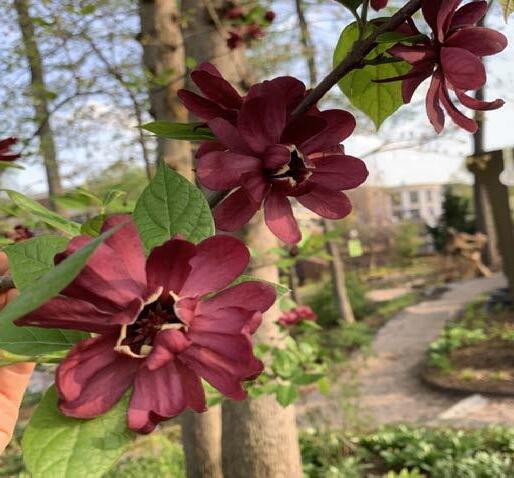
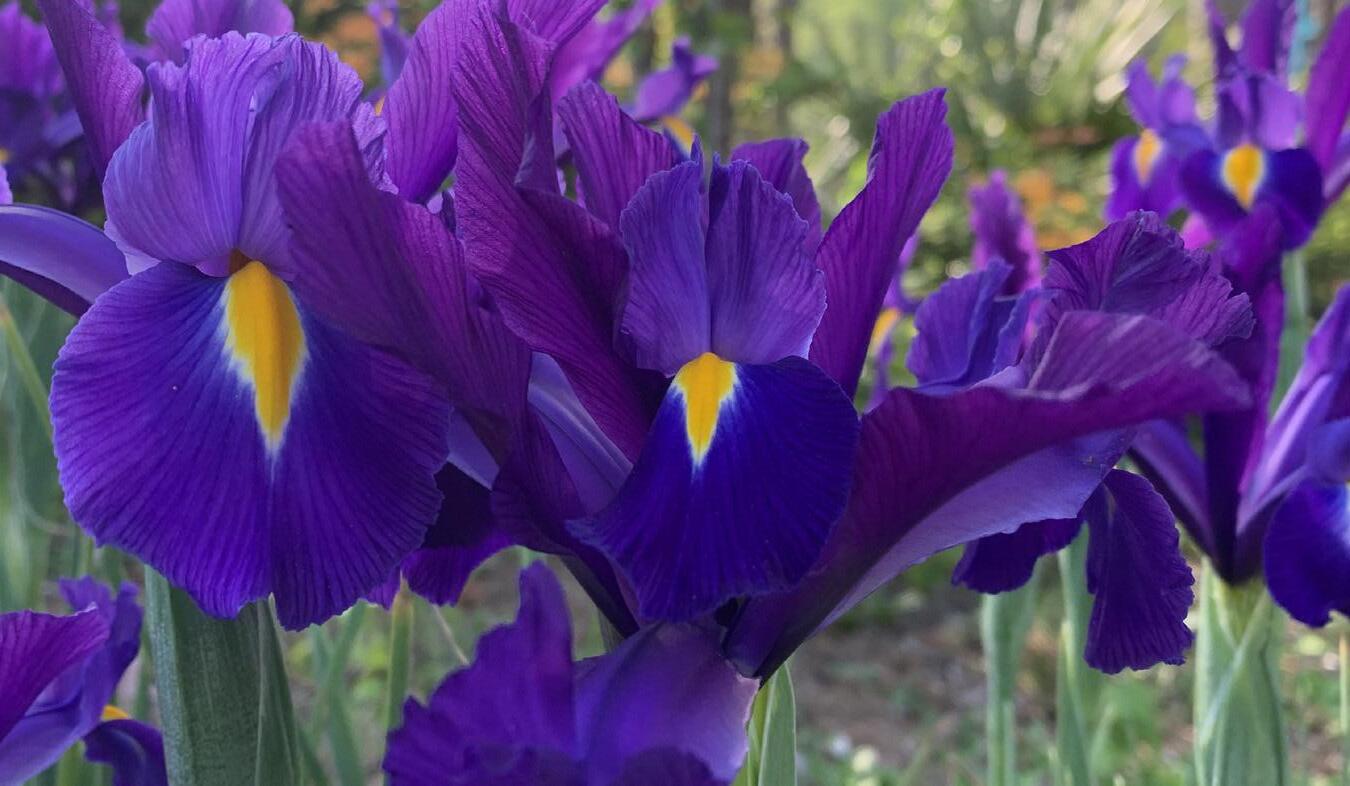

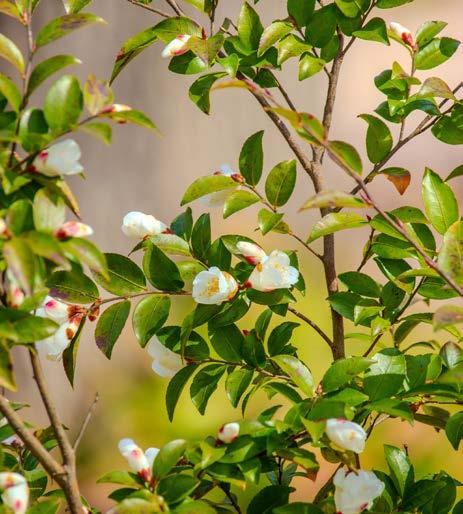
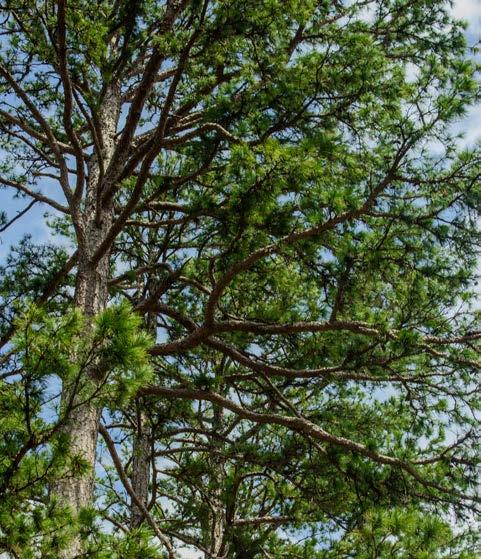
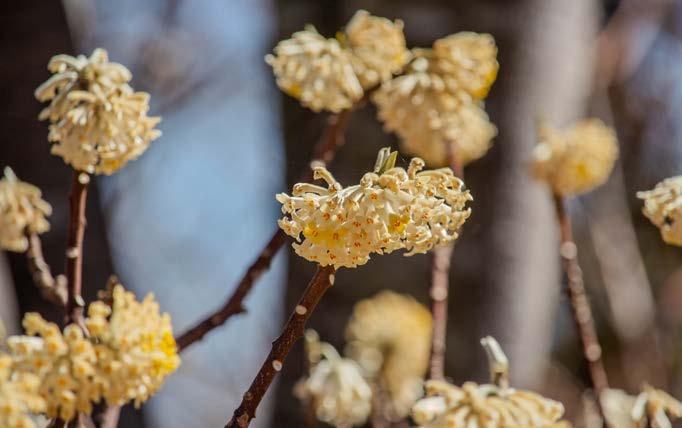
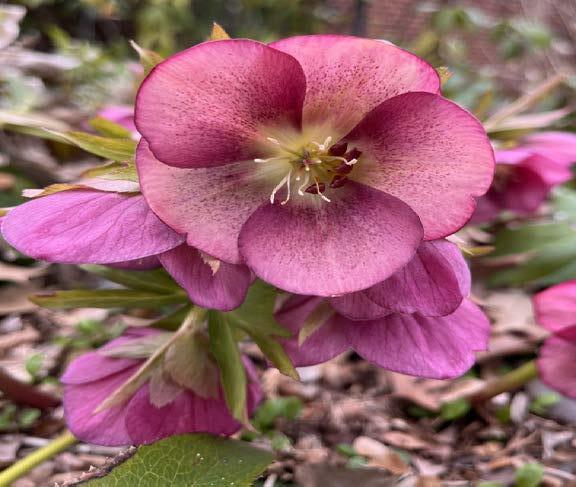
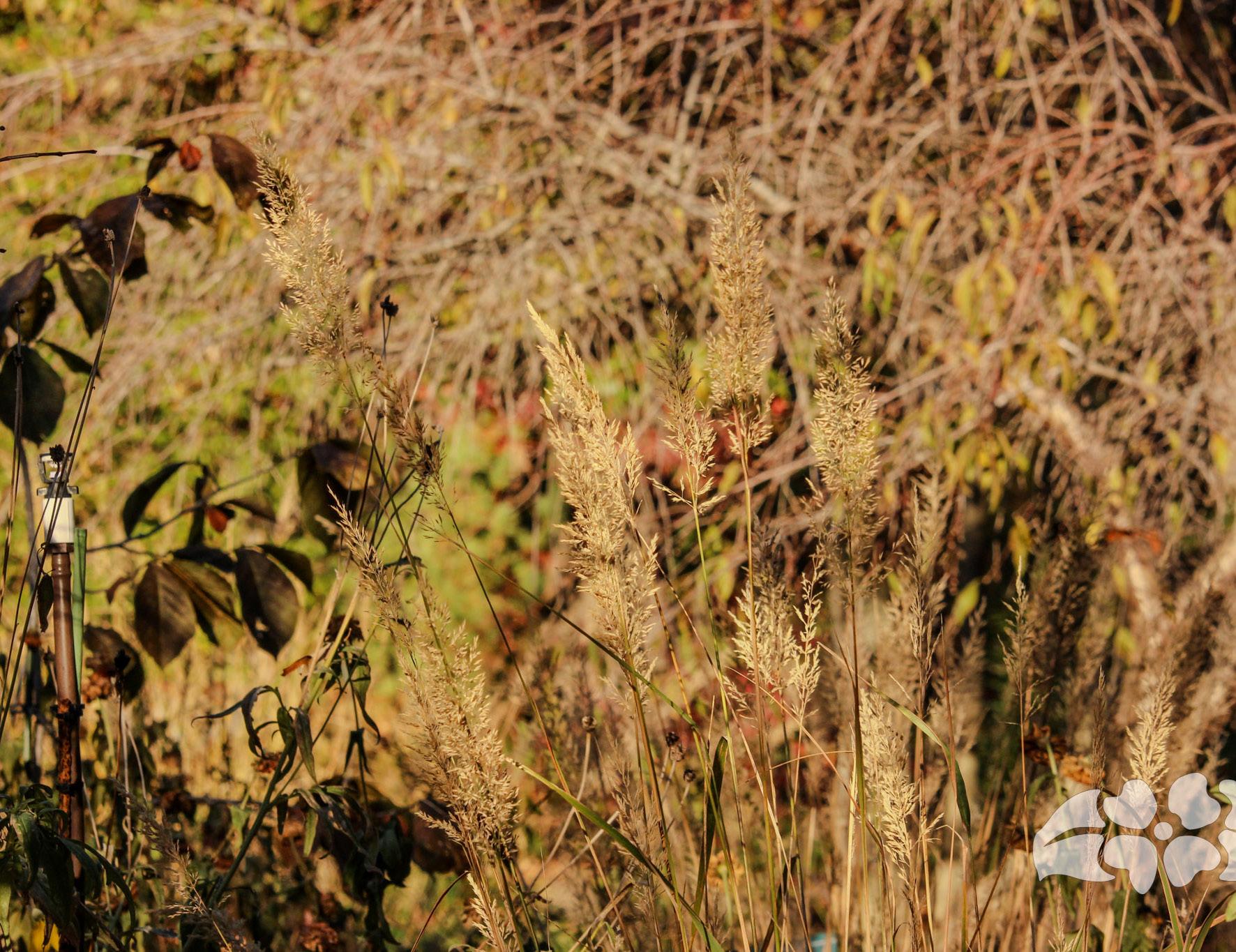
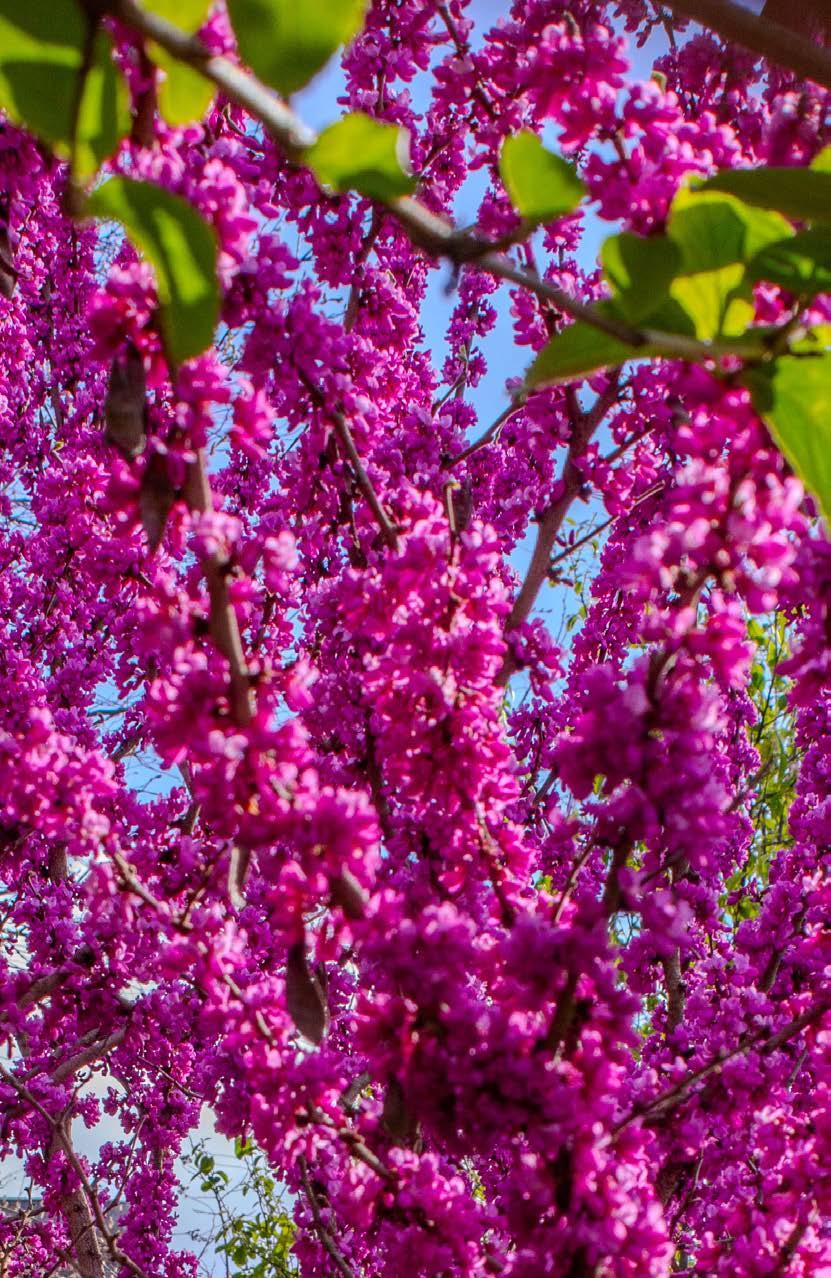










The Mariana H. Qubein Arboretum & Botanical Gardens are a cornerstone of High Point University’s commitment to beauty, education, and student wellness.
The gardens feature a diverse collection of plant life and tranquil landscapes designed to foster learning, reflection, and connection with nature. Established to enhance both the academic and aesthetic environment of HPU, the gardens have evolved into a dynamic resource for students, faculty, and the wider community.
The Gardens were founded in 2006 by HPU First Lady Mariana Qubein. In recognition of her vision and leadership in establishing the Arboretum and Botanical Gardens, the HPU Board named them for her in 2009.
These days, our talented horticulture team, student employees, and dedicated community volunteers maintain an extensive network of display gardens and horticultural collections.
The gardens are open to the public and free of charge 7 days a week from 8 am to 8 pm. Visitors are welcome to explore on their own, but because the gardens are spread throughout campus we recommend scheduling a guided tour with one of our staff members.
Guided tours are free and are available throughout the year. The best times of year to visit are from MarchMay, and September and October.
For more information and to schedule a tour, please visit our website:
For the latest garden news, including what’s in bloom and upcoming events, follow us on Instagram and Facebook. Keep up to date!


@hpugardens
The Mariana H. Qubein Arboretum and Botanical Gardens


Our campus features hundreds of unique trees. Explore our campus-wide arboretum by looking for information signs at the base of trees
Key


































Welcome
Morgan Knot Garden Dr. E. Roy Epperson Garden
Henson Reflection Garden
Bonnie H. Smith Prayer Garden
Teresa’s Garden
Caine Conservatory
Scarborough Butterfly Garden
Topiary Fusion Garden Memorial Garden Markham Medicinal Garden
Deal Shade Garden
Plaxico Climbing Rose Garden


Waterfall Garden
Future Cottrell Japanese Garden

Moon Garden
Overlook Garden Spirit Garden Patriot’s Plaza
Tropical Garden Lakeside Garden
& Staff Perennial Garden
Dogwood Grove
Sculpture Garden
Garden 9/11 Memorial Bulb Garden Woodland Hillside Garden
Azalea Path
Culinary Herb Garden
Minor Infinity Garden
Ridley Rose Garden
Our magnolia collection features over 100 different cultivars. Many of our magnolia specimens were generously contributed by the Steel Magnolias - a group of HPU alumni who spearheaded the effort to grow our collection.
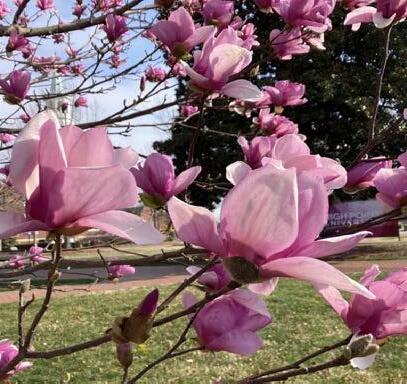
Magnolias bloom from MarchApril, and can be found throughout campus. Look for particularly beautiful specimens in the Phillips Sculpture Garden and the Deal Shade Garden.
Our collection also features dozens of cultivars of redbuds, dogwoods, flowering apricot, and flame azaleas which can be found in the Hillside Garden, Phillips Collection Sculpture Garden, and the Wandering Dogwood Grove. Many of these plants are all native to NC, and can be found in bloom in our gardens in March and April.
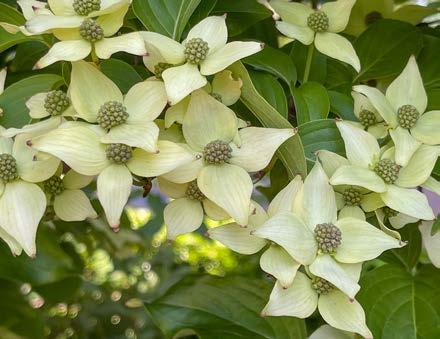

High Point University has been recognized as a Tree Campus Higher Education by the Arbor Day Foundation every year since 2009. This prestigious designation is awarded to campuses that actively sustain, promote, and protect their trees. Tree campuses also engage students through service learning to promote physical and mental health benefits, encourage environmental stewardship, and foster a deeper connection with the natural world. For more information, visit arborday.org.
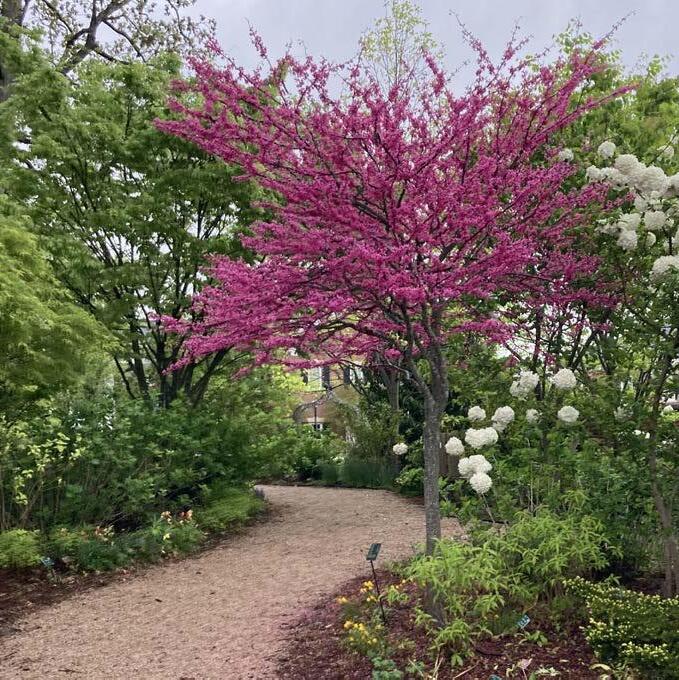
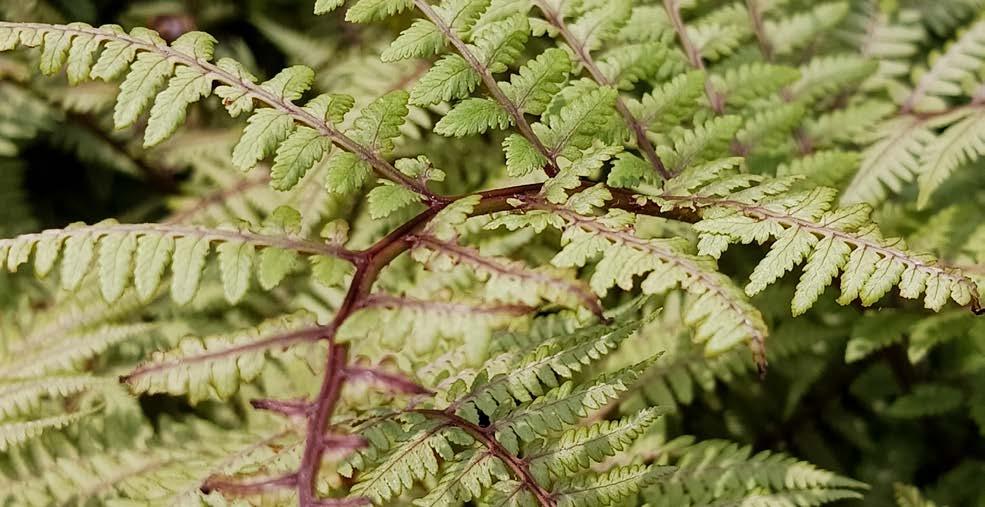

The HPU Arboretum has been designated a Level II arboretum by The ArbNet Accreditation Program and the Morton Arboretum.
The ArbNet Arboretum Accreditation Program is a global initiative to recognize and unify arboreta worldwide, promoting professionalism and collaboration. Accreditation through ArbNet recognizes HPU Arboretum as a member of the Morton Register, a community of 2285 worldwide arboreta, and one of 174 arboreta certified at Level II. For more information visit arbnet.org.
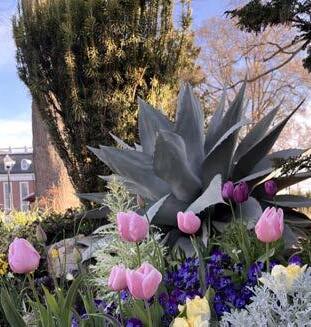
The Welcome garden is the first garden many visitors see when they arrive on campus, so to make a positive impression, the garden puts on a magnificent display throughout the seasons. Sculptural plants like whale’s tongue agave, Hinoki false cypress, and fastigiate plum yew lend structure to the garden, providing a backdrop to a beautiful array of spring flowering bulbs like hyacinths, daffodils, and allium. In summer and fall, warm season annuals, such as lantana and angelonia mingle with colorful perennials and tropical plants to extend the beauty of this multi-season garden.

The design of this space thoughtfully evokes a sense of serenity. Visitors can trace a calming labyrinth in the paving stones, surrounded by lush greenery and the soothing sound of a fountain. The plant selection, including Aspidistra, ferns, and hostas, thrives in the shade of the nearby sugar maple.
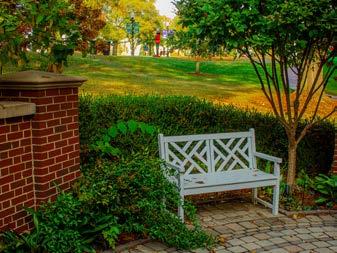
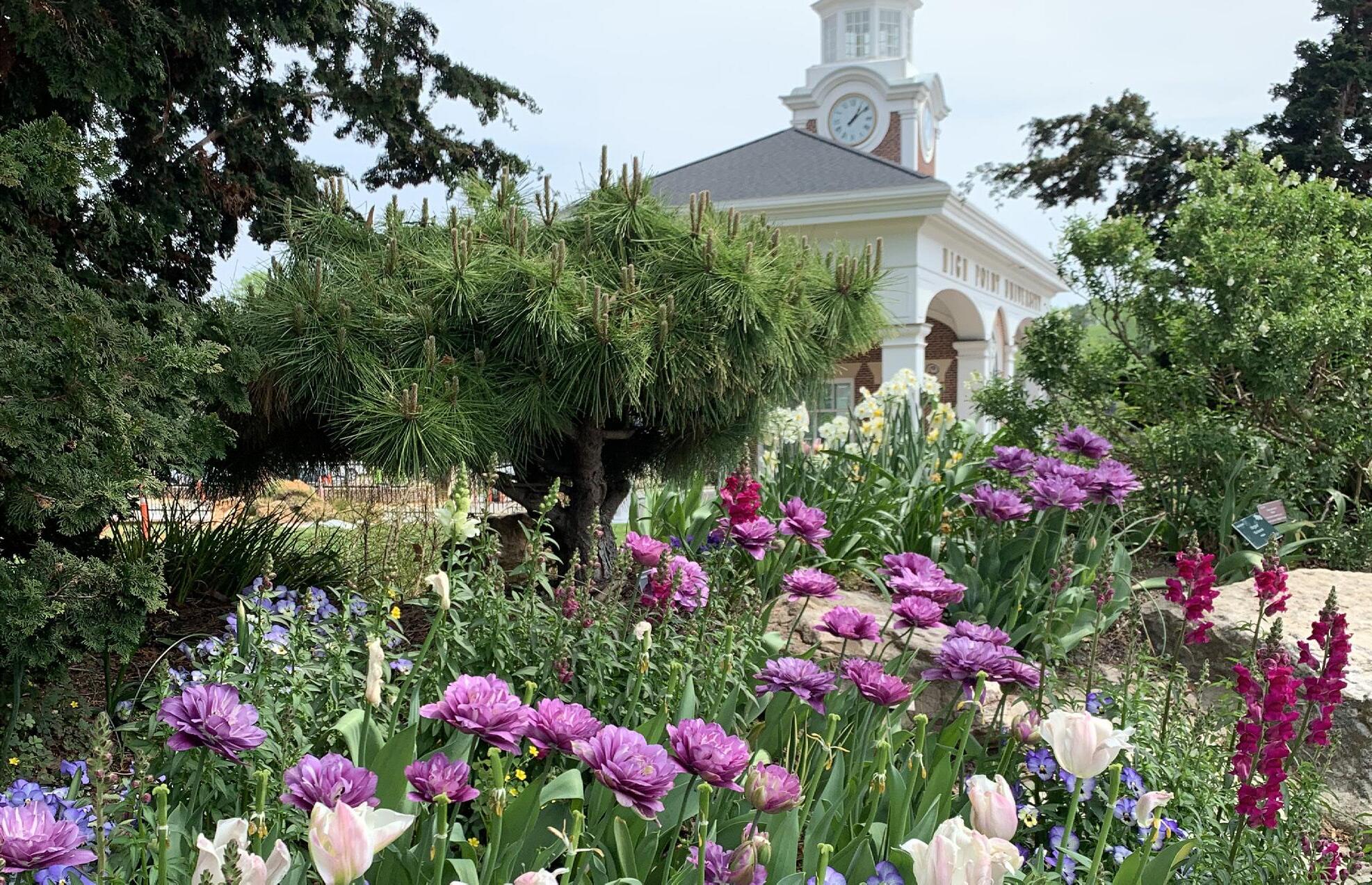
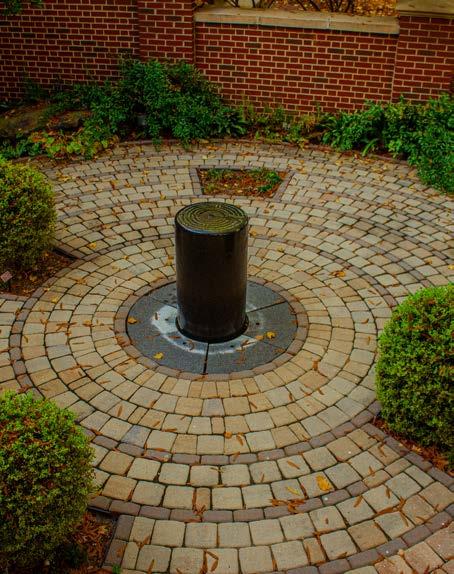
This lovely garden honors the memory of Dr. Epperson, a dedicated administrator and professor at HPU. Nestled between the Hayworth Fine Arts Center and Couch Hall, this space reflects his lifelong passion for both the arts and sciences. With over 40 years of service, Dr. Epperson’s legacy is celebrated through a selection of plants - such as irises and edgeworthia - that were cherished in his own garden.
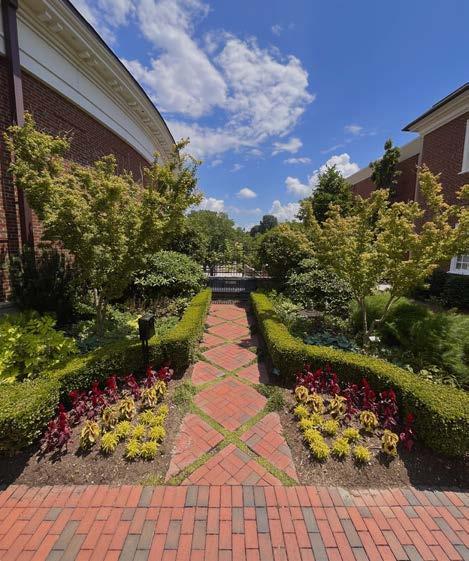
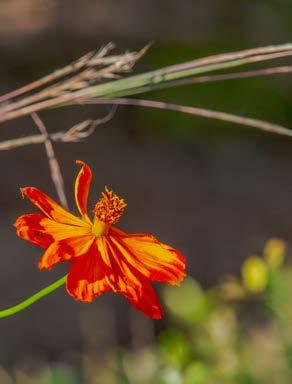
Clipped Yaupon holly hedges form an infinity shape, while grasses and wildflowers lend a meadowy feel to the garden. This garden honors Bill Minor who met his wife on campus.
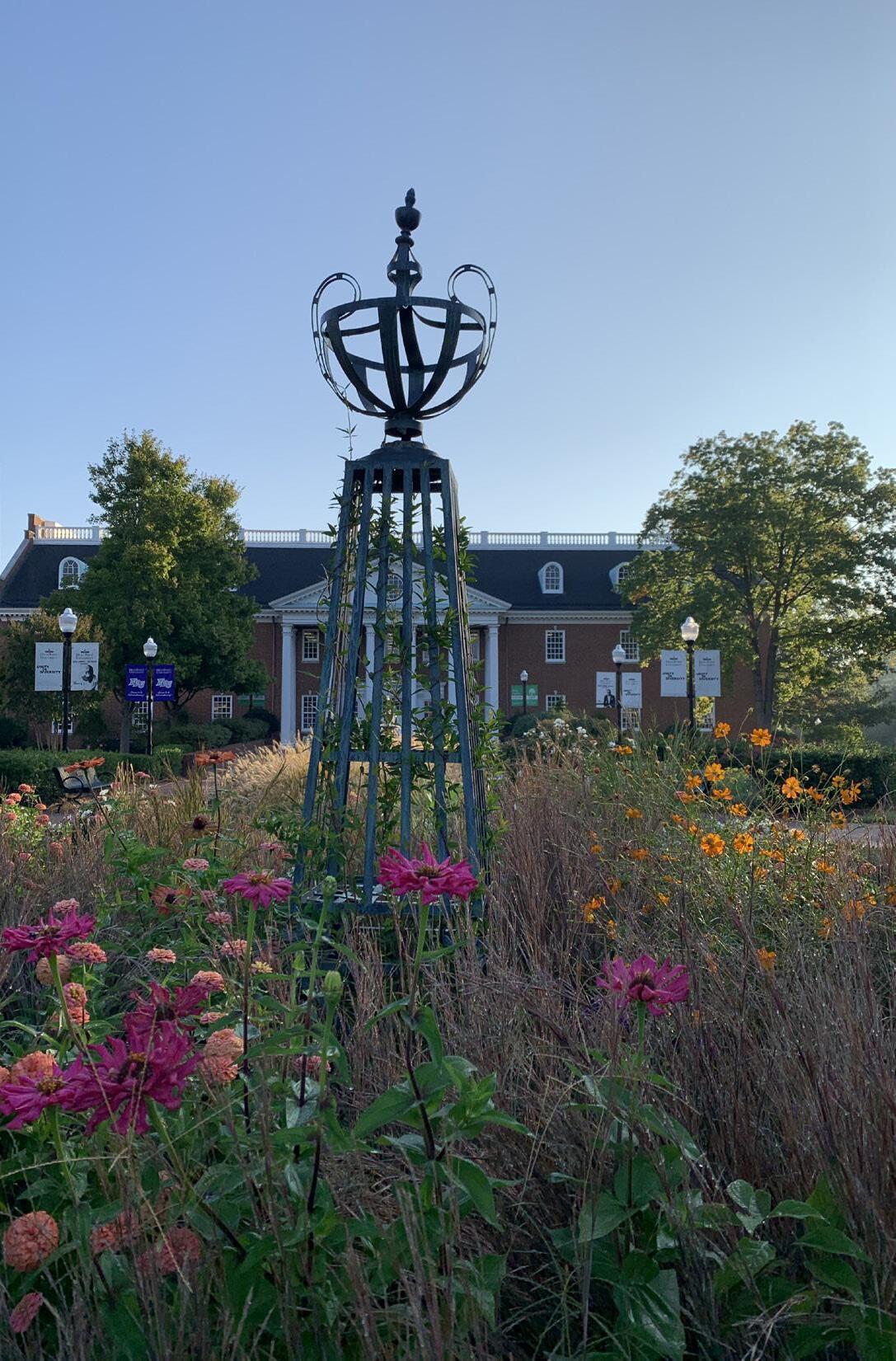
The Rose Garden was the first garden built on campus and began as an experiment to beautify a barren patch of lawn outside the library. The garden was well received and helped to spur the initiative to expand our collections into a campus botanical garden. Today, there are 46 types of roses in front of Smith Library - a stunning display of reds, pinks, oranges, and yellows. University trustee Clarence Ridley supported this garden to honor his wife, Eleanor.
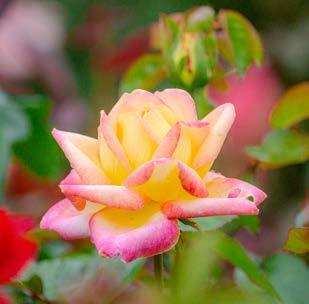
An array of beautiful white blooms and silvery green foliage creates a soothing monotone color scheme, while an arching arbor and three-tiered fountain contribute to the atmosphere of self-reflection and tranquility in this garden space. This garden is in bloom from early spring - with a profusion of tulips and daffodils - through summer and fall, when calamintha, lamb’s ear and Japanese anemone add color and fragrance to the garden.
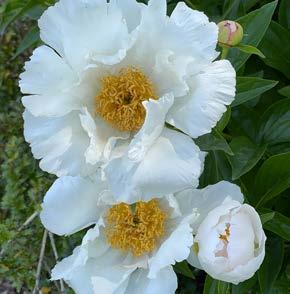
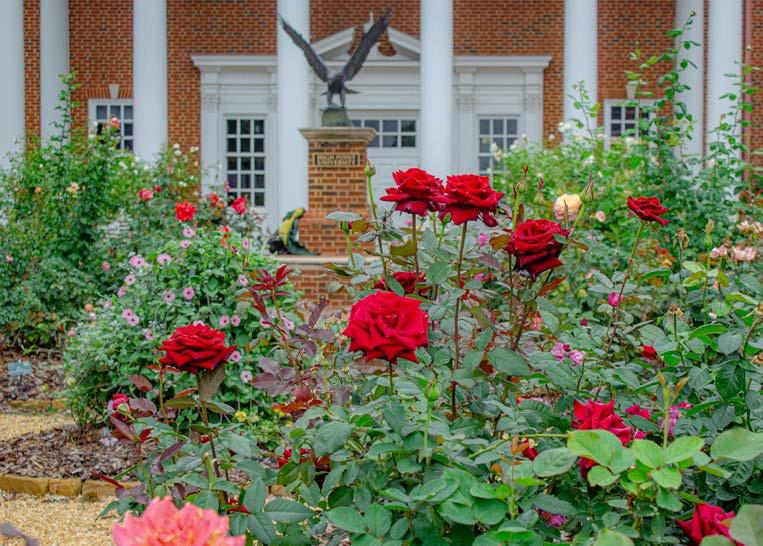
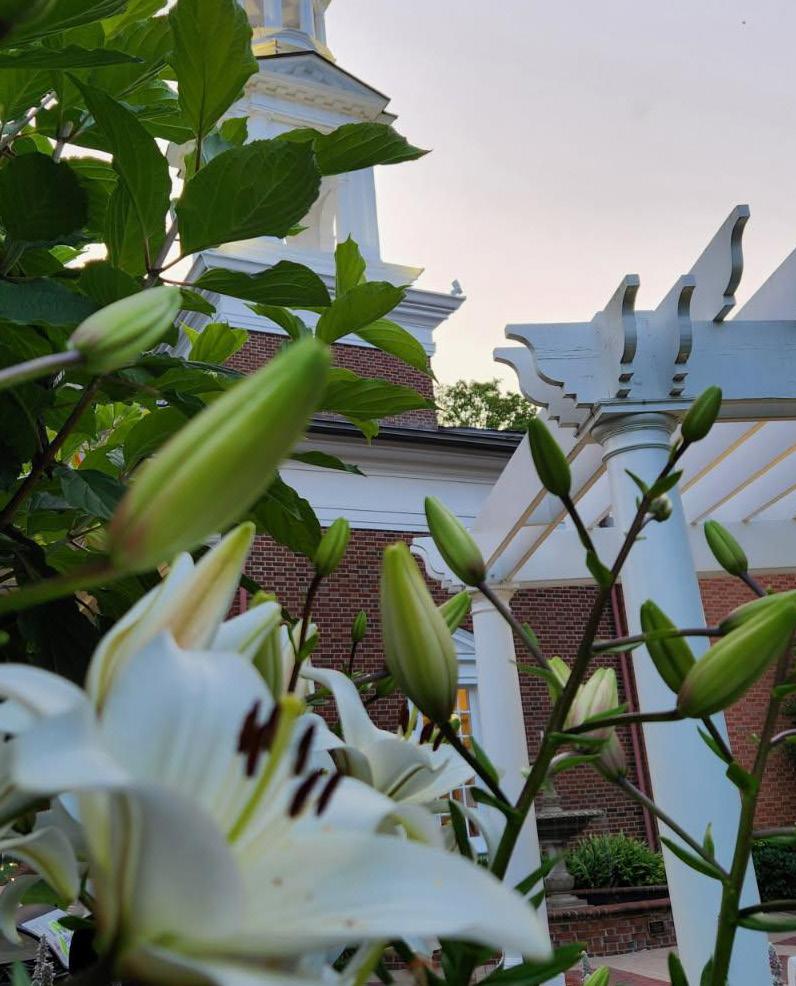
Wander through this shaded woodland retreat for expansive views of the Panther Commons, the Qubein Arena and northern campus, or find a quiet nook to relax and connect with nature. Newly added pathways create a convenient shortcut, connecting the "I Love HPU" sign to Millis Gym and the Slane area. Along Panther Drive, springflowering shrubs and perennials add vibrant sweeps of color, inviting visitors to explore and enjoy the garden.

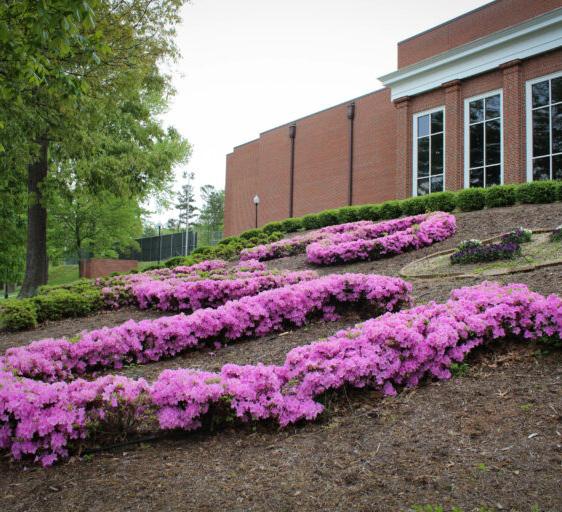
This garden features shrubs and flowers shaped to spell out ‘Go HPU’ alongside the Millis Center.
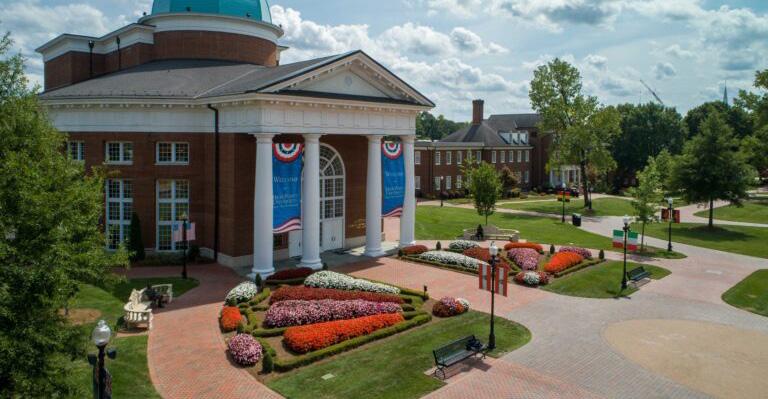
Clipped hedges and annual flowers form the intricate pattern of this Elizabethianstyle knot garden. The garden was donated by Jim and Phyllis Morgan
The Caine Conservatory, located in the Wanek School of Natural Sciences, serves as a hub for interdisciplinary, experiential learning while offering a peaceful retreat for the campus community. As the crown jewel of the gardens, it provides a serene environment for all to enjoy.
Spanning 15,000 square feet beneath a stunning 60-foot glass roof, the Georgianstyle conservatory enriches the campus with an impressive array of plants from tropical, subtropical, and desert climates. The conservatory section features a main tropical display house, a working production greenhouse, and an arid plants greenhouse.
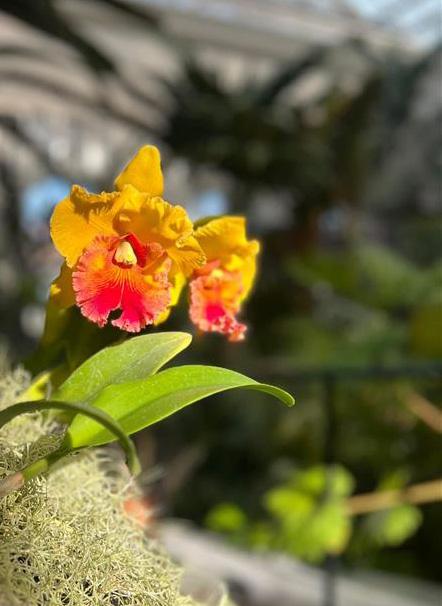
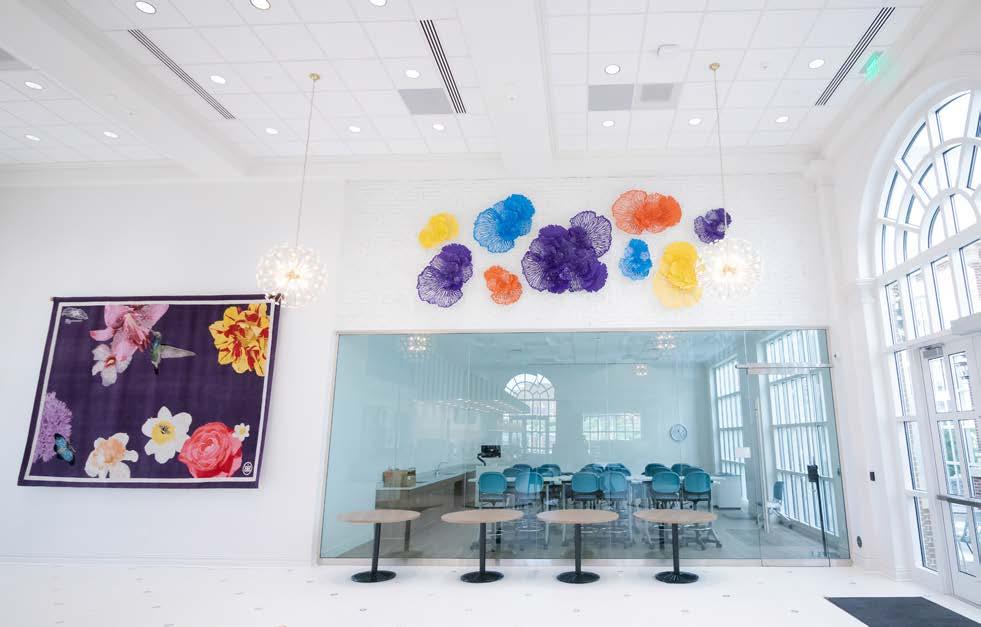
Across an open air breezeway, the Butterfly cafe offers a Mediterraneaninspired menu that. An adjacent classroom provides flexible space for courses, events, and club activities. Together, these areas create a vibrant destination for learning, connection, and relaxation.
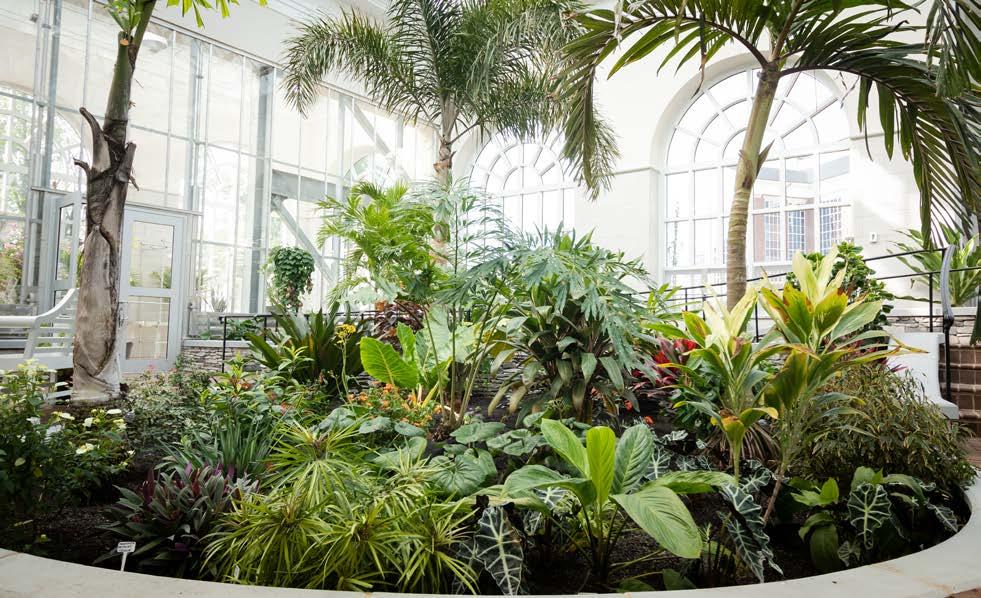

Situated next to the Wanek School of Natural Sciences, this formal garden’s design is shaped to resemble the 1911 Rutherford model of the atom, celebrating the landmark discovery that revealed the atom’s dense nucleus and orbiting electrons.
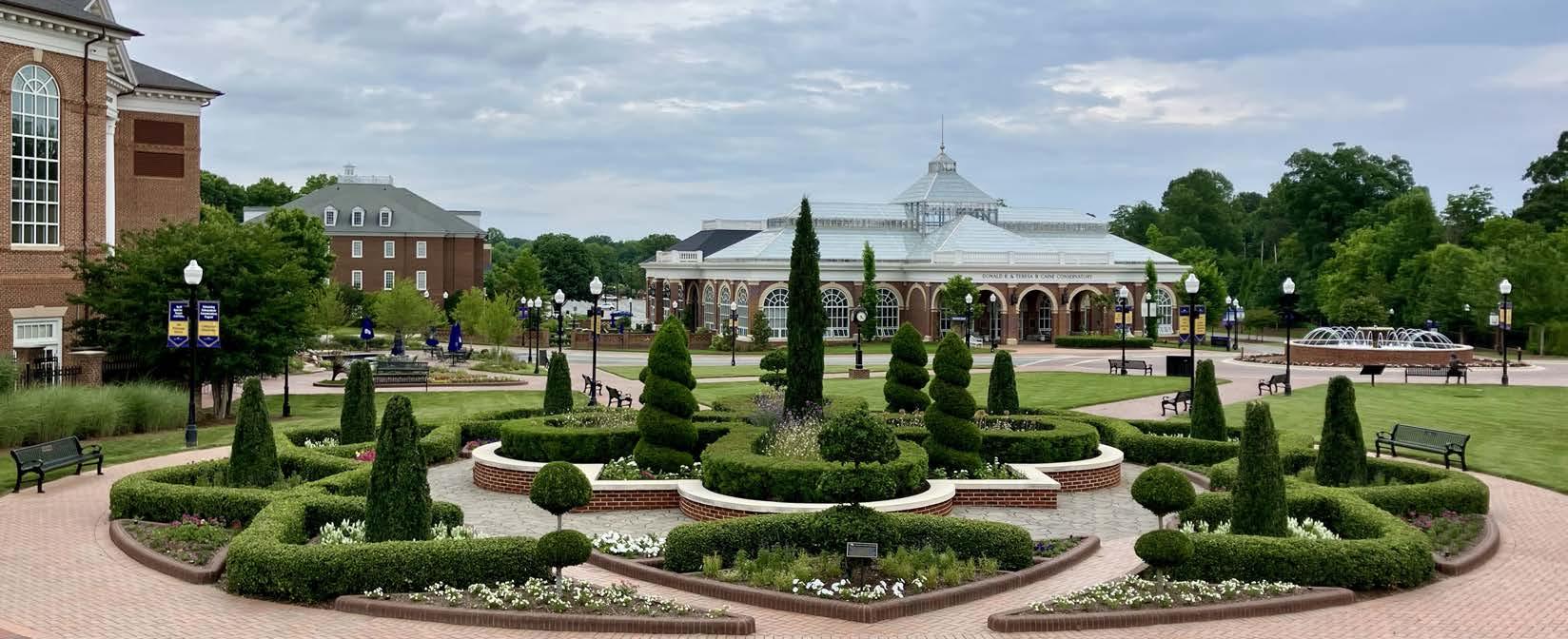
Hedged garden beds are punctuated with topiaries and filled with colorful displays of annual flowers and bulbs.
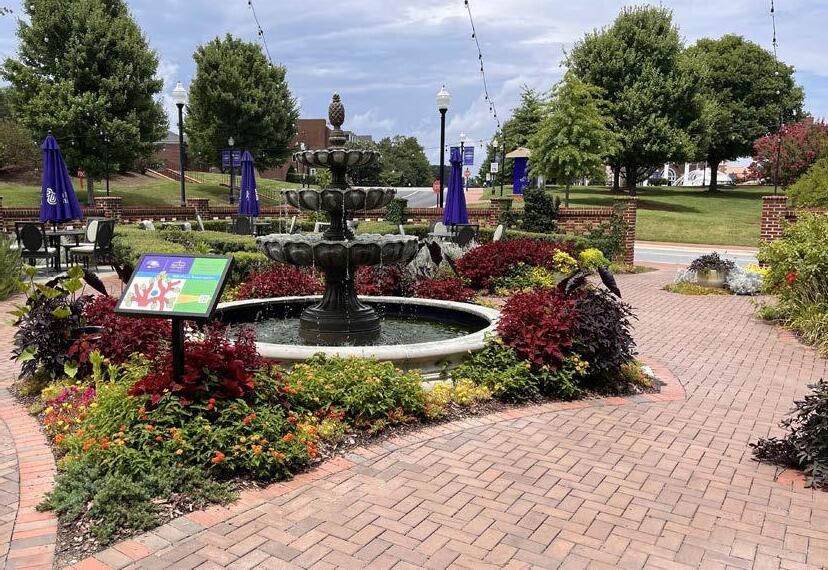
Located just outside the Caine Conservatory and the Butterfly Café, this cottage-style garden is the perfect place to sit and relax surrounded by colorful flowers, fruit trees, and herbs.
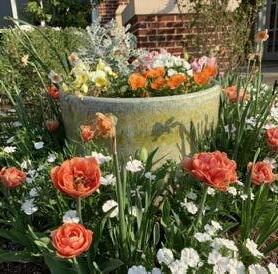
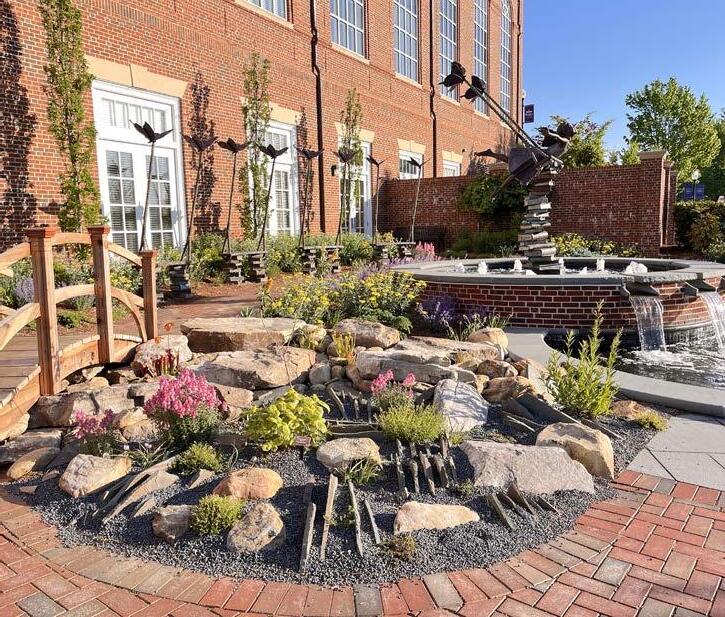
The recently renovated butterfly garden plaza features a meadow-like mix of over 1000 butterfly-friendly plants and grasses. The bustling plaza area includes plenty of seating to enjoy the sculptures, waterfall, and koi pond surrounding the site.

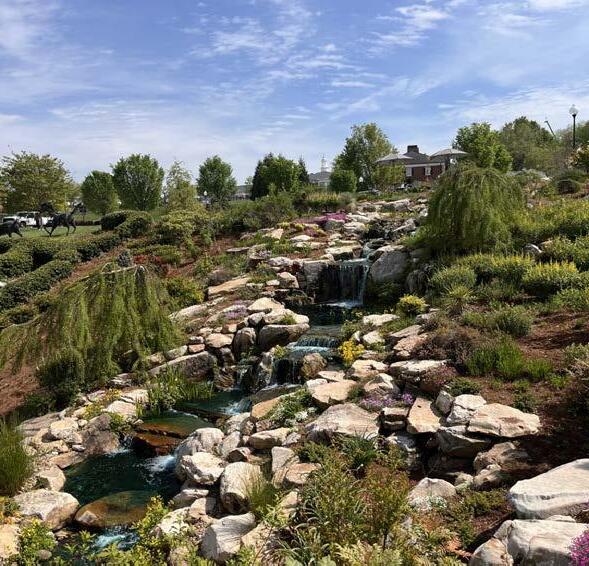
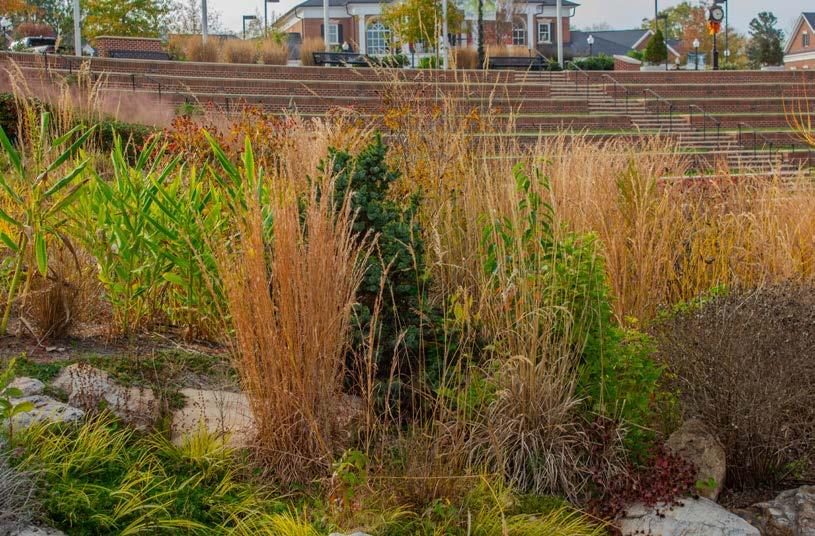
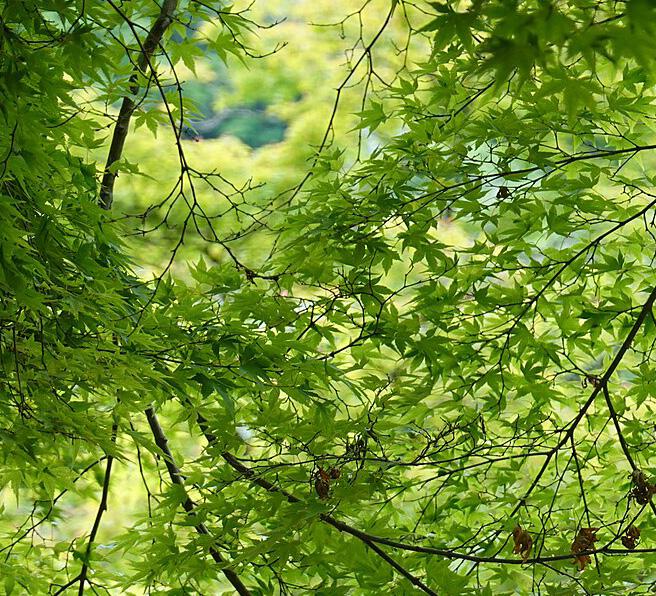
In the fall of 2025 we welcome the addition of a Japanese Garden, designed by acclaimed landscape architect and Japanese garden specialist, Sadafumi Uchiyama.
Located across from the waterfall garden behind Cottrell Hall, the new space will feature a tiered waterfall and pond, stone terrace, and a Japanese style tea house. Meandering walking paths will weave through the garden, offering visitors a peaceful retreat to enjoy its natural beauty and tranquility.
Framing the Cottrell Amphitheater, this garden showcases a dramatic waterfall framed by weeping bald cypress and boulder-hugging groundcovers like juniper and creeping phlox. Scrolling hedges sweep along the slope, while a native meadow bursts with blooms enjoyed by pollinators and people alike.
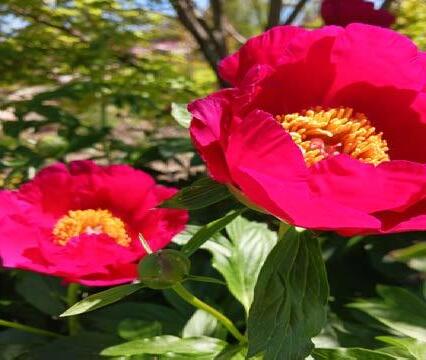
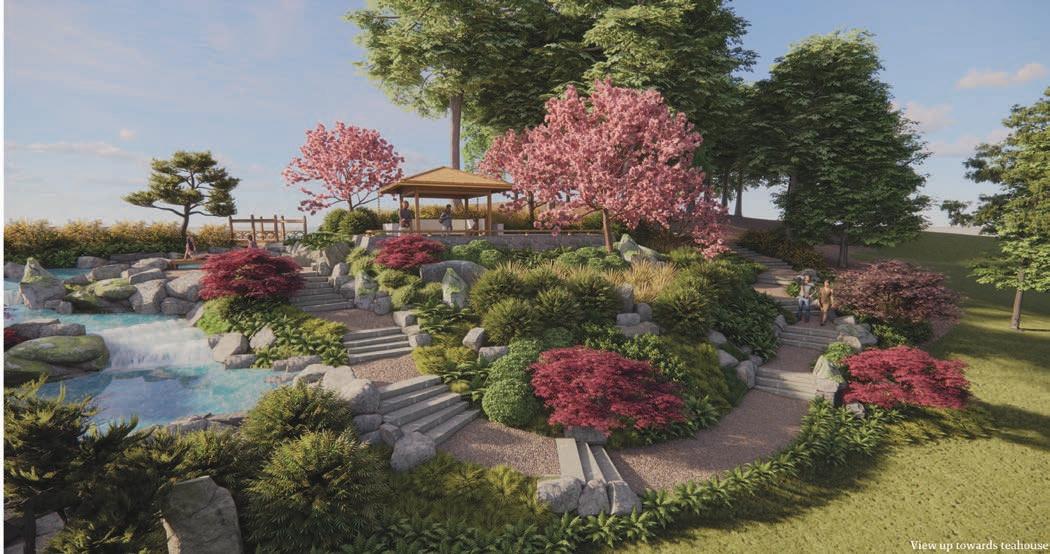
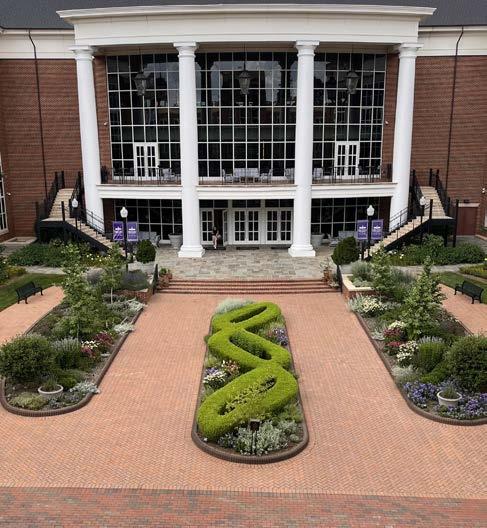

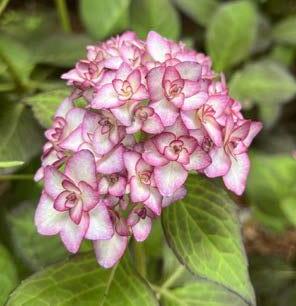
This educational garden highlights plants with unique medicinal value. A yaupon holly hedge provides structure for a diverse collection, from classic remedy plants like oregano, lavender, and purple coneflower to lesserknown healers such as ginkgo, foxglove, and various Artemisia species. Since many modern medicines originate from plants, this garden is a reminder of the many ways we rely on nature to sustain us.
Mature oak and hickory trees form the structure of this peaceful garden, while understory trees and shrubs like redbud, dogwood, and Chinese fringe flower provide interest and intrigue along the winding paths.
Part shade plants - like our hydrangea collectionthrives in the dappled light, while dense understory plantings of Lenten rose, coral bells, geranium, and ferns provide a textural mosaic on the garden floor. Seating nooks in the garden provide lovely space for retreat, and students can often be found reading, studying, or walking the paths.
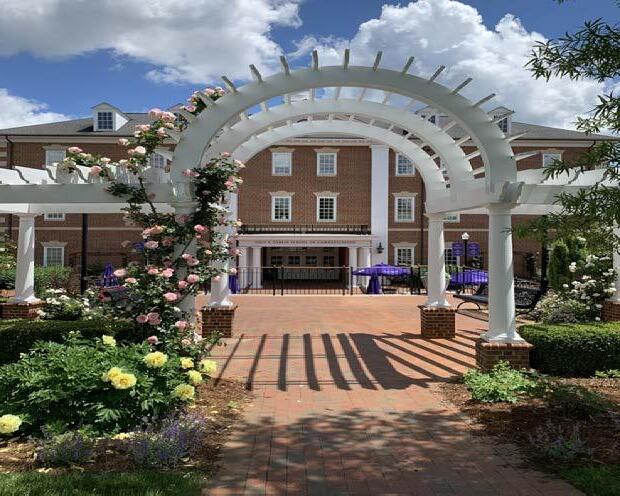
Elegant climbing roses drape a white arbor, while peonies, viburnum, salvia, and catmint add soft pastel accents to a vibrant early May display— perfectly timed for HPU’s graduation.
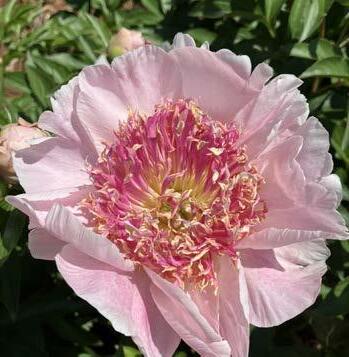
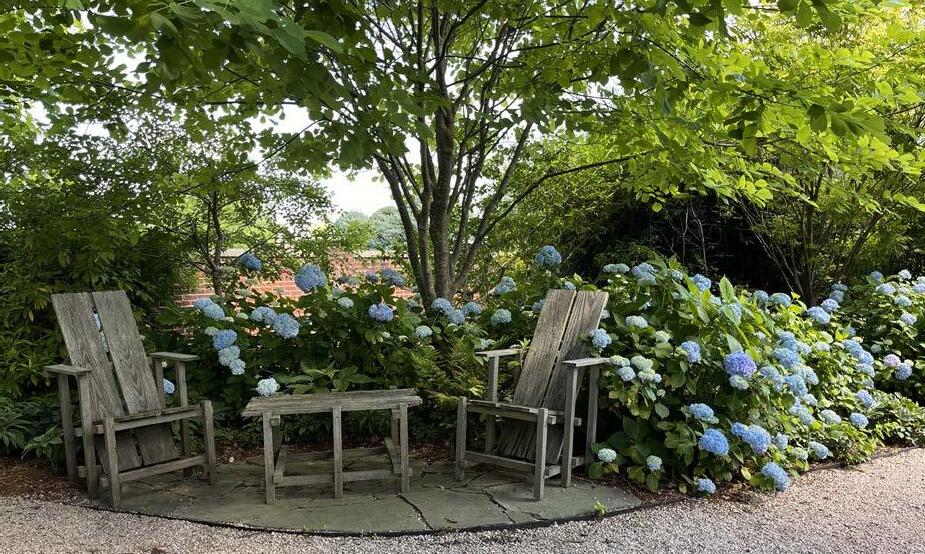
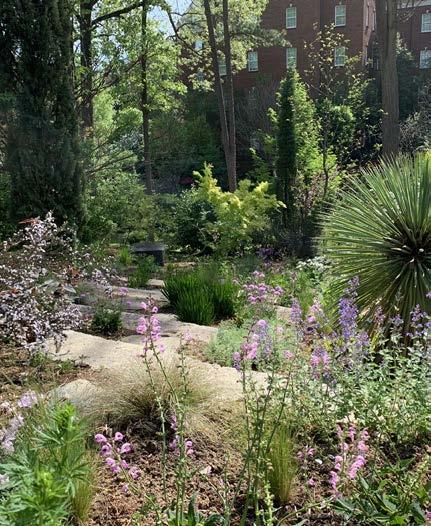
A network of serpentine pathways wind through these wooded gardens. A diverse selection of perennials, shrubs, and trees provide multi-season interest. Sculptural artworks can be found throughout, as well as seating nooks to take in the serenity of this peaceful garden.
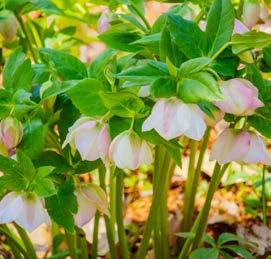
In spring, daffodils, hyacinths, and woodland ephemerals light up the garden, but as the seasons change hands, it becomes a lush array of textural shade plantings.
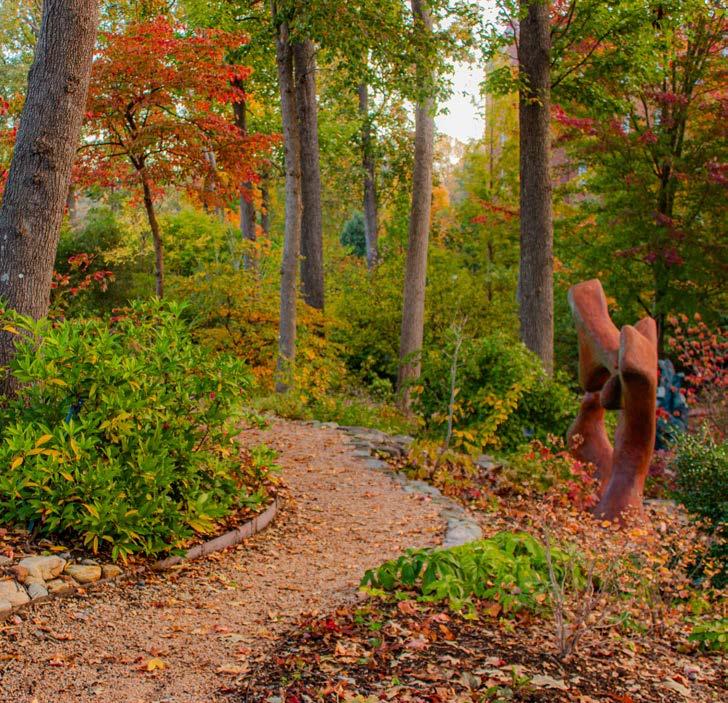
The shaded azalea path is a symphony of color in mid April, when hundreds of quinces, azaleas, and viburnums bloom alongside flowering dogwoods, redbuds, and magnolias. This exuberant display is complimented by groupings of cheerful yellow daffodils and fragrant hyacinths. When these blooms fade in midsummer, a mosaic of textural perennials like acorus, sweet woodruff, and ferns make this garden the perfect place for a tranquil stroll.
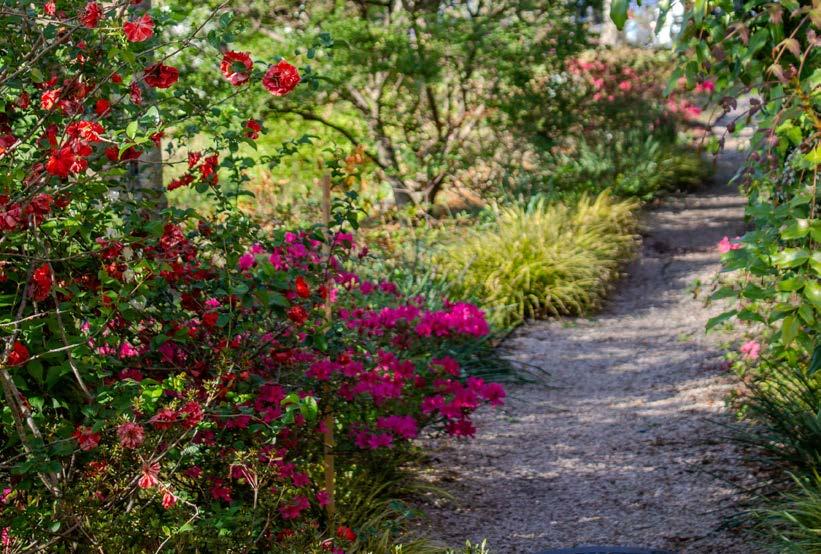
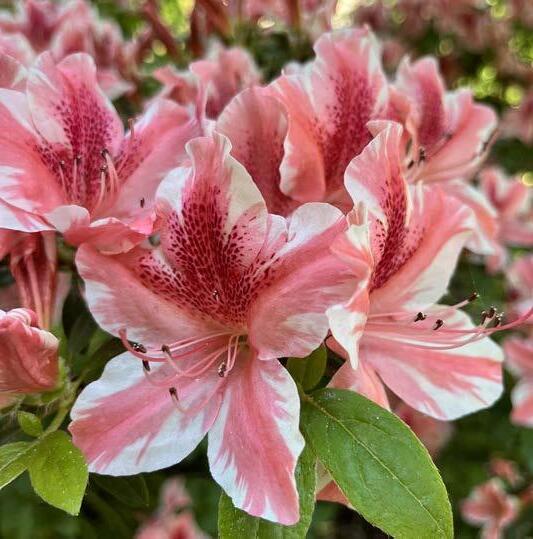
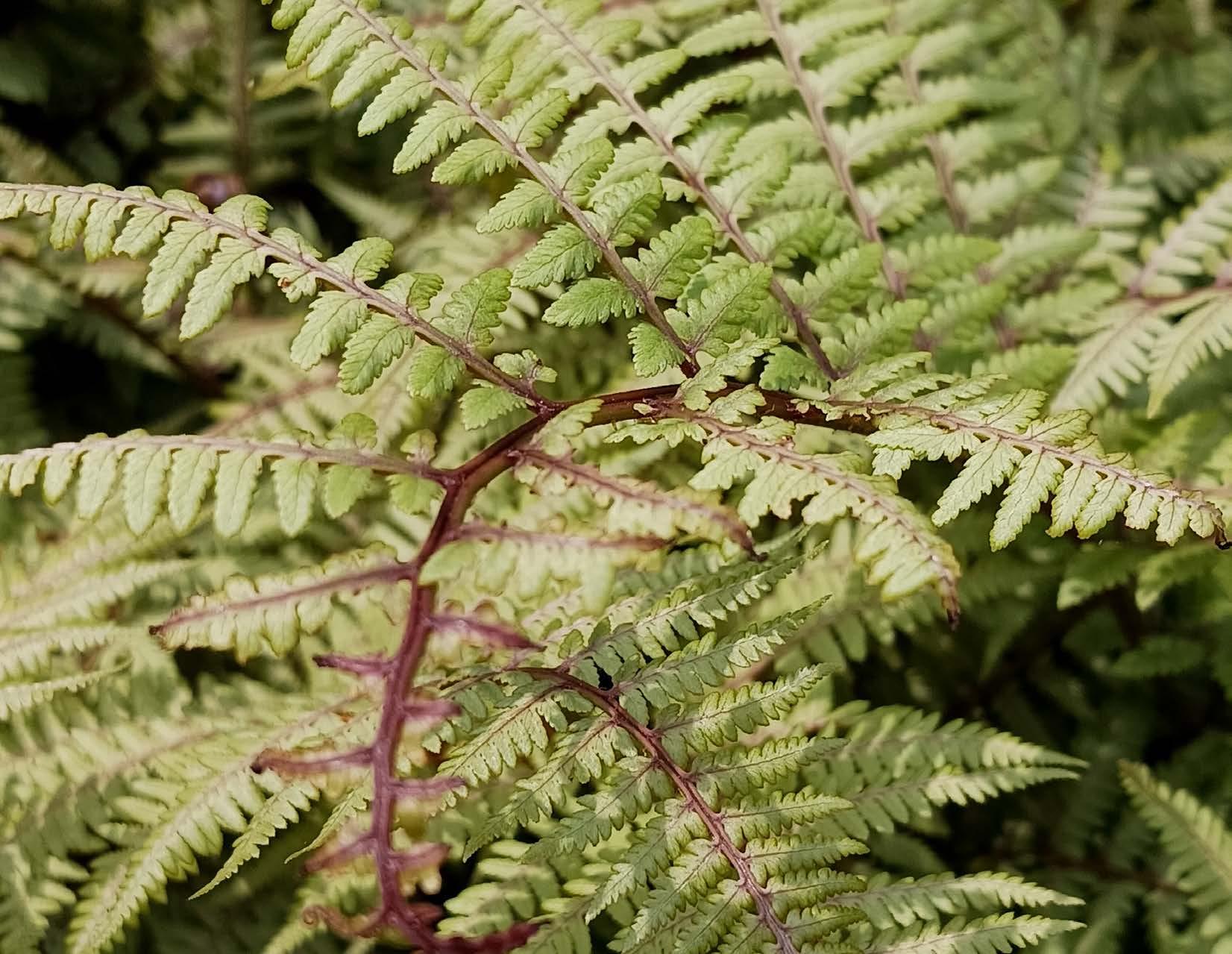
Arching around four interconnected ponds, these wetland gardens showcase plants that thrive in both saturated and dry conditions. In summer, vibrant blooms from Carolina Allspice, Swamp Titi, Tamarix, Japanese Iris, Hibiscus, and Canna bring bursts of color along the banks.
Though often referred to as “lakes,” these ponds are actually part of a cleverly designed stormwater retention system. They mimic natural wetlands while collecting runoff from surrounding areas on campus. By slowing down the flow of water and allowing it to gradually infiltrate the soil, they help prevent flooding and reduce pressure on the stormwater system.
Together with two additional stormwater systems in the Greek Village and A/B parking lots, the Lakeside Garden demonstrates how urban landscapes can use sustainable water management practices—like rain gardens and wetlands—to reduce runoff and support local ecology.
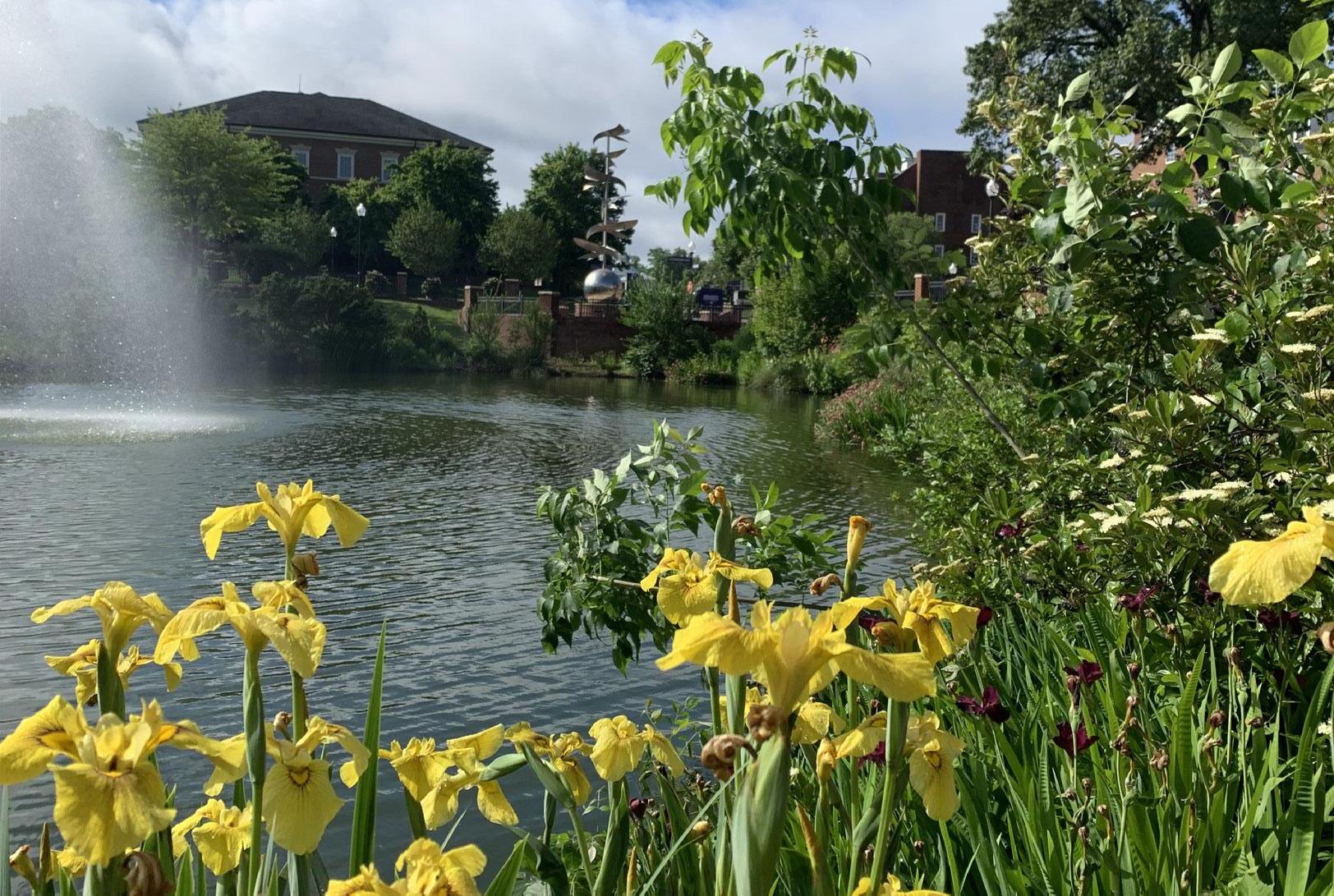
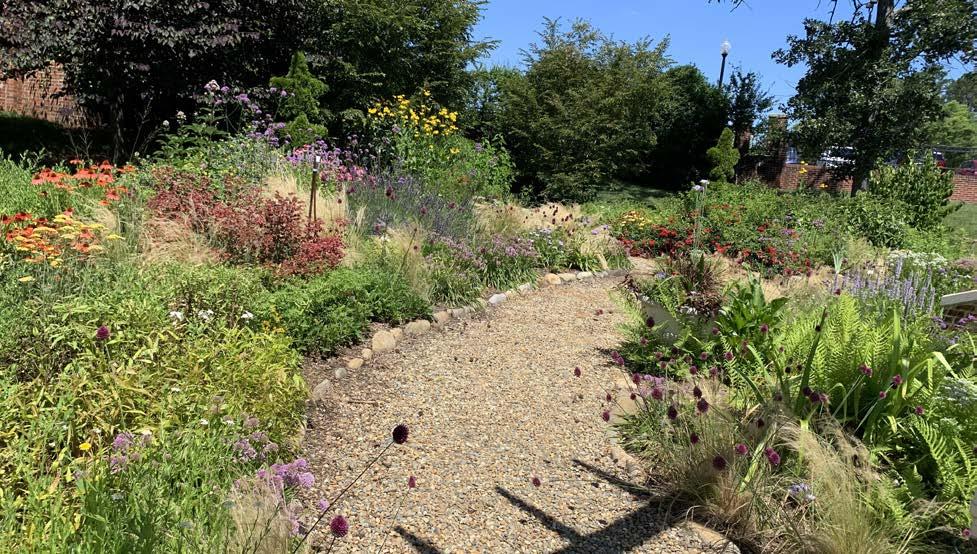
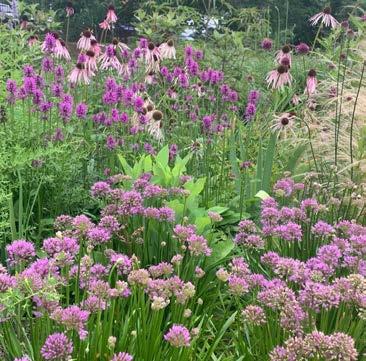
Dedicated to the faculty and staff who helped it flourish, the Perennial Garden was originally established with plants generously donated from their own home gardens. Today, it offers a vibrant display of color from April through October.
Spring begins with blooms of Iris, Salvia, and Allium, followed by a summer profusion of Brazilian Verbena, Echinacea, Lavender, Stokes Aster, Hibiscus, and Scabiosa. In fall, the garden closes the season with a brilliant show of Sheffield Mums and Asters.
Tucked behind the amphitheater, this hidden gem is a peaceful retreat—perfect for quiet reflection or a stroll among the blooms. Bees, butterflies, and birds make regular visits, adding life and motion to this ever-changing landscape.

1.Qubein Center Fountains
2.Coughlin Fountain
3.Panther Commons
4.Ca
5.Valentine Fountain
7.Communications Fountain
8.Congdon Fountain
9.The Chip and Judy Anderson Waterfall Walkway 10.Belk Fountain
11.McEwen Couryard Fountain
12.Dudley Fountain
13.Slane Fountain
14.Finch Fountain
15.Henley Fountain
16.Chapel Fountain
17.D. Andrew Bills Fountain
18.Innovation Way Fountain Fountains Plazas

47. Parterre Plaza
48. Louis and Marjorie Ho man Amphitheater
49. Jerry R. Murdock ‘52 Patriot’s Plaza and Fountain
50. Fallucca Plaza
51. Cottrell Amphitheater
52. Strickland Scholarship Plaza & Reflecting Pool
53. Kester International Promenade
54. Butterfly Plaza
55. Mahler Promenade
















































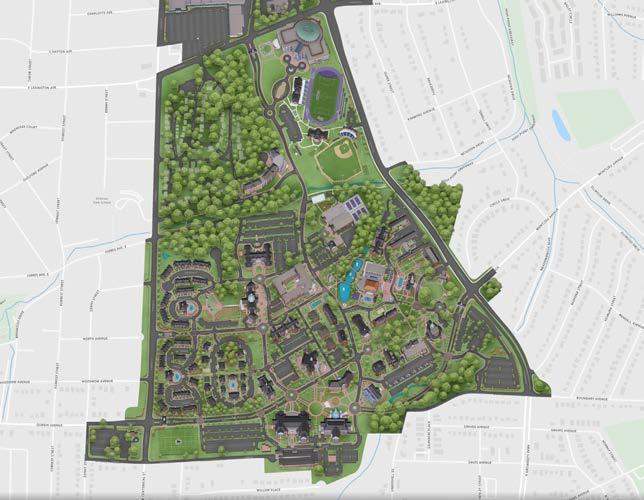











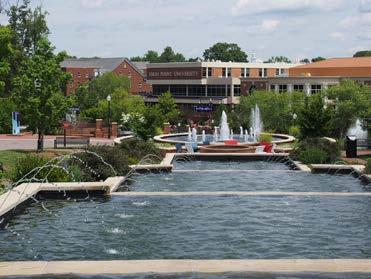
HPU’s many fountains, like the Waterfall Walkway and Congdon Fountain, bring energy and a sense of movement and life to campus
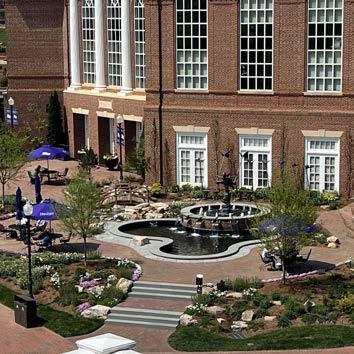


Sculptures like ‘Tree of Life’ and ‘Olympic Strength’ are works of art that reflect our values and stoke imagination


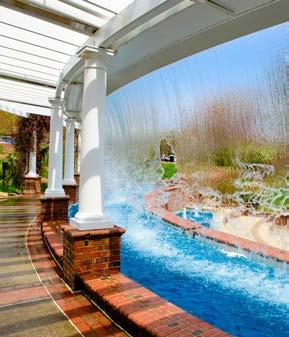
Outdoor spaces such as the Butterfly Plaza beautify the campus and provide a place to gather and socialize
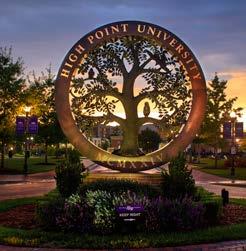

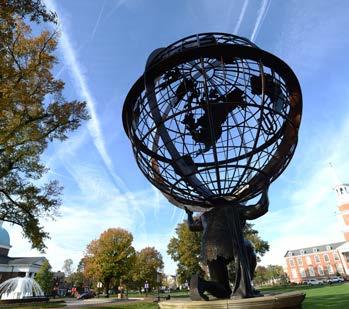

Our volunteers are essential to our work of creating and caring for beautiful garden spaces that benefit our students, staff, and community. As a volunteer, you will assist our horticulture team in maintaining, expanding, and improving our gardens and plant collections.
Volunteering is also a great opportunity learn more about horticulture, connect with likeminded people in your community, and contribute to our mission of sharing the wonder of the natural world with our students and community. To learn more and apply, visit www.highpoint.edu/gardens/volunteer